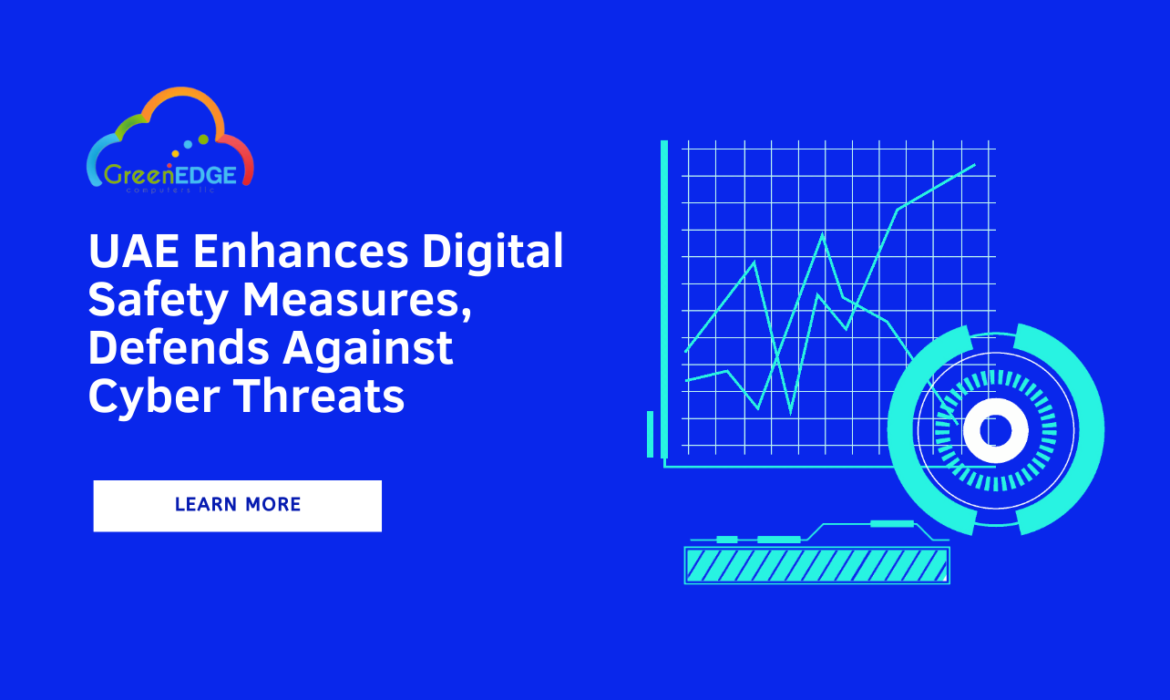What Type of Social Engineering Targets Particular Groups of People?
Wanna know what Type of Social Engineering Targets Particular Groups of People? Social engineering is a deceptive practice that manipulates individuals into revealing confidential information or performing certain actions that benefit the attacker. It preys on human psychology, exploiting our natural instincts to trust and help others. While social engineering can affect anyone, it’s crucial to understand that certain groups of people may be more vulnerable or targeted due to specific characteristics or circumstances. In this blog, we will delve into the types of social engineering that particularly target these groups and how individuals can protect themselves.
Employees and Organizations
Social engineering attacks on employees and organizations are widespread because they are a lucrative target. Cybercriminals often employ tactics like phishing, pretexting, and baiting to exploit employees who might inadvertently expose sensitive information. These attacks often come in the form of convincing emails, phone calls, or physical presence, designed to trick employees into disclosing passwords, financial data, or granting unauthorized access.
To protect against such attacks, organizations need to educate their employees about the dangers of social engineering and establish robust security protocols. These may include two-factor authentication, encryption, and regular security awareness training.
Elderly Individuals
The elderly are a particularly vulnerable group when it comes to social engineering attacks. Fraudsters often target them through phone calls or unsolicited home visits, using a variety of tactics such as impersonating family members or posing as authority figures to extract personal and financial information.
To protect elderly individuals from social engineering attacks, it’s essential for family members and caregivers to educate them about the risks and help them set up safeguards. This may include installing caller ID, not disclosing personal information to strangers, and regularly monitoring their financial accounts.
Children and Adolescents
Social engineering targeting children and adolescents is becoming increasingly common, thanks to the rise of social media and online gaming. Cyberbullies and predators may use manipulation and deceit to exploit young individuals into revealing personal information, engaging in inappropriate activities, or sharing compromising content.
Parents and guardians play a crucial role in protecting their children from social engineering. It’s vital to educate children about online safety, encourage open communication, and monitor their online activities.
Seniors and Retirees
Seniors and retirees, who may have limited experience with technology, are frequently targeted by scams that exploit their lack of familiarity with digital platforms. Fraudsters often use unsolicited phone calls or emails, posing as tech support, charity workers, or government officials, to gain access to personal and financial information.
To safeguard seniors and retirees, it’s important to provide them with guidance on recognizing and avoiding these scams, as well as helping them set up strong security measures like antivirus software and email filters.
Healthcare Professionals
In recent years, social engineering attacks on healthcare professionals have been on the rise. Cybercriminals exploit the trust and pressure within healthcare settings, often employing tactics like phishing, pretexting, or baiting to gain access to sensitive patient data or disrupt healthcare operations.
Healthcare organizations should prioritize robust cybersecurity measures, including employee training, secure data storage, and regular security audits to protect against social engineering attacks.
Immigrant Communities
Immigrant communities can be susceptible to social engineering attacks due to their unfamiliarity with the legal and administrative systems of their host country. Scammers may impersonate government officials or lawyers, claiming to provide assistance with immigration processes in exchange for personal and financial information.
Members of immigrant communities should seek legal advice from reputable sources and be cautious when approached by individuals offering assistance. It’s essential to verify the legitimacy of any person or organization claiming to provide immigration services.
Politically Active Individuals
Politically active individuals, such as activists, journalists, or politicians, often find themselves as targets of social engineering attacks. Attackers may employ tactics like spear-phishing to gain access to sensitive information, disrupt political campaigns, or manipulate public perception.
To safeguard against social engineering attacks, politically active individuals should prioritize strong online security measures, regularly update their passwords, and be cautious of unsolicited messages or links.
Also read: How Can You Protect Yourself from Social Engineering Attacks?
Conclusion
Now you might know what type of social engineering targets particular groups of people? Social engineering attacks are a prevalent and evolving threat, affecting various groups of people across different demographics. While these attacks exploit vulnerabilities and characteristics specific to each group, it’s crucial to recognize the common thread of manipulation and deception that runs through all social engineering tactics.
Education and awareness are the most potent weapons against social engineering attacks. Empowering individuals and organizations with the knowledge to recognize and respond to these tactics is the first step in mitigating their impact. By staying vigilant, taking proactive security measures, and promoting a culture of cybersecurity, we can collectively defend against the insidious nature of social engineering. Remember, the best defense is an informed and cautious mind.
What is social engineering?
In this blog you will get know what is social engineering? Social engineering is a term encompassing a wide spectrum of malicious activities that primarily rely on human interaction. These activities employ psychological manipulation to deceive individuals into committing security breaches or divulging sensitive information.
Social engineering attacks generally unfold in a multi-step process. Initially, the attacker conducts research on the target to gather essential background information, including potential vulnerabilities and weak security practices. This information is used as a foundation for launching the attack. Subsequently, the perpetrator endeavors to establish trust with the victim and employs various stimuli to coax them into taking actions that compromise security, such as revealing confidential data or providing access to critical resources.
Social engineering attack techniques
Social engineering attacks come in diverse forms and can manifest wherever human interaction is involved. The following are the five most prevalent manifestations of digital social engineering tactics:
Baiting:
- Just as the name implies, baiting attacks exploit the victim’s curiosity or greed. Perpetrators use enticing promises to lure users into traps that lead to the theft of personal information or the introduction of malware. For instance, attackers may leave seemingly legitimate but malware-infected devices, like flash drives, in high-traffic areas to pique curiosity. When picked up and connected to a computer, these devices automatically install malware.
Scareware:
- Scareware attacks inundate victims with false alarms and fabricated threats. Users are tricked into believing their systems are infected with malware, coercing them to install seemingly helpful but ultimately worthless software or additional malware. These scams often appear as legitimate-looking pop-up banners when browsing the web, urging users to install deceptive tools or leading them to malicious websites.
Pretexting:
- In pretexting attacks, attackers obtain information through a web of well-constructed lies. Typically, perpetrators impersonate trustworthy entities, such as co-workers, police officers, or bank officials, to deceive victims into divulging sensitive information. They establish a facade of trust and ask questions ostensibly needed to confirm the victim’s identity, collecting a wide range of personal data, including social security numbers, personal addresses, and phone records.
Phishing:
- Phishing is one of the most widespread forms of social engineering attacks. These campaigns also typically involve email and text messages designed to create a sense of urgency, curiosity, or fear, compelling recipients to reveal sensitive information, click on malicious links, or open malware-laden attachments. For example, an email may notify users of a policy violation that necessitates immediate action, leading them to a counterfeit website where they unwittingly submit their credentials to the attacker.
Spear Phishing:
- Spear phishing is a highly targeted variation of phishing. Attackers select specific individuals or organizations and meticulously tailor their messages based on the victim’s characteristics, job roles, and contacts, making the attack more inconspicuous. Spear phishing also requires substantial effort on the attacker’s part and may take weeks or months to execute. Messages are crafted to closely mimic authentic communication, thereby deceiving recipients into revealing sensitive information or credentials.
These social engineering techniques remain a significant threat, and users should stay vigilant and exercise caution to avoid falling victim to these deceptive tactics.
How to protect from Social Engineering?
Now you know what is social engineering? Let’s know how to protect yourself from social engineering? Social engineers deftly exploit human emotions like curiosity and fear to execute their schemes, making it vital to exercise caution whenever you encounter alarming emails, enticing online offers, or stray digital media. Maintaining alertness is your first line of defense against the majority of social engineering attacks conducted in the digital realm.
Additionally, the following tips can help enhance your vigilance in the face of social engineering tactics:
Exercise Caution with Emails and Attachments:
- Refrain from opening emails and attachments from unfamiliar or suspicious sources. Even if you recognize the sender but have doubts about the content. It’s wise to cross-verify information through alternate channels like phone calls or official service provider websites. Keep in mind that email addresses can be also easily spoofed. And an email appearing to be from a trusted source may have malicious origins.
Implement Multifactor Authentication (MFA):
- Attackers often target user credentials as a valuable prize. Enabling MFA adds an extra layer of security to your accounts, significantly reducing the risk of compromise in case of a security breach. Consider deploying user-friendly 2FA solutions like Imperva Login Protect to bolster account security for your applications.
Exercise Skepticism with Tempting Offers:
- If an offer seems too good to be true. It probably is. Take a moment to research the offer online to confirm its legitimacy. A quick internet search also can help you distinguish between a genuine opportunity and a potential trap.
Keep Antivirus and Antimalware Software Updated:
- Regularly update your antivirus and antimalware software. Also ensuring that automatic updates are enabled or manually downloading the latest signature updates. Periodically verify that the updates have been applied and run system scans to detect and remove potential infections.
Conclusion:
I hope you got the answer to your question What is social engineering? In conclusion, when it comes to fortifying and protecting your online presence, make the wise choice by entrusting your security to Green Edge Computers. We are your robust defense against the intricate web of social engineering threats. Stay confidently secure with us – choose Green Edge Computers. We are your shield against social engineering threats. Stay secure, choose Green Edge Computers.
How Can You Protect Yourself from Social Engineering Attacks?
Looking for the answer to your question how can you protect yourself from social engineering? In today’s interconnected world, social engineering attacks have become a prevalent threat to our online security and privacy. Cybercriminals employ various manipulative tactics to trick individuals into revealing sensitive information or taking harmful actions. To safeguard yourself against these cunning attacks, it’s crucial to understand how you can protect yourself from social engineering. In this blog by Green Edge Computers , we’ll delve into effective strategies to defend yourself against social engineering attacks.
Table of Contents
- Understanding Social Engineering
- Common Social Engineering Techniques
- Recognizing Red Flags
- Protecting Yourself from Social Engineering Attacks
- a. Strengthen Your Passwords
- b. Implement Two-Factor Authentication
- c. Be Cautious with Email and Messages
- d. Verify Identity and Requests
- e. Educate Yourself and Your Team
- f. Secure Your Online Presence
- Real-Life Examples and Case Studies
- Conclusion
1. Understanding Social Engineering
To effectively protect yourself from social engineering attacks, you must first understand what social engineering is. Social engineering is a manipulative technique used by cybercriminals to exploit human psychology and gain access to sensitive information or systems. These attacks rely on trust, deception, and psychological manipulation to deceive their targets.
2. Common Social Engineering Techniques
Social engineers employ a variety of techniques to trick their victims. It’s essential to be aware of these tactics, which may include pretexting, phishing, baiting, tailgating, and more.
3. Recognizing Red Flags
Recognizing the warning signs of a potential social engineering attack is critical. This section will cover the common red flags that may indicate you are being targeted.
4. Protecting Yourself from Social Engineering Attacks
Now, let’s focus on how you can safeguard yourself from these attacks:
a. Strengthen Your Passwords
- Use strong, unique passwords for each online account.
- Consider using a password manager to generate and store complex passwords.
b. Implement Two-Factor Authentication (2FA)
- Enable 2FA wherever possible to add an extra layer of security.
- This makes it significantly harder for attackers to gain access.
c. Be Cautious with Email and Messages
- Be skeptical of unsolicited emails, especially those requesting personal information or containing suspicious links or attachments.
- Verify the sender’s identity before responding to any request for sensitive information.
d. Verify Identity and Requests
- Always double-check the identity of individuals making requests for sensitive data or actions.
- Contact the requesting party through a trusted channel to confirm their request’s legitimacy.
e. Educate Yourself and Your Team
- Educate yourself and your team on social engineering tactics and the importance of cybersecurity.
- Regular training and awareness programs can significantly reduce the risk.
f. Secure Your Online Presence
- Regularly update your software, antivirus, and firewall to stay protected from the latest threats.
- Monitor your online presence, including social media, to prevent attackers from gathering information about you.
5. Real-Life Examples and Case Studies
This section will provide real-life examples and case studies of social engineering attacks, highlighting the consequences and the lessons learned.
What is social engineering?
Along with knowing How Can You Protect Yourself from Social Engineering Attacks?, it is also important to know what is social engineering. Social engineering is a form of psychological manipulation in which an attacker, often a cybercriminal or malicious individual, exploits human behavior to deceive people into revealing confidential or sensitive information, performing certain actions, or making security mistakes. This technique does not rely on exploiting software vulnerabilities or hacking into systems but instead preys on the inherent vulnerabilities of human nature.
Social engineers are skilled in using various tactics to manipulate and deceive their targets. Common social engineering techniques include:
Phishing:
Attackers send seemingly legitimate emails, messages, or websites that impersonate trusted organizations, aiming to trick individuals into revealing personal information like usernames, passwords, or credit card details.
Pretexting:
A social engineer fabricates a fabricated scenario or pretext to obtain information. For example, someone might pose as a coworker or IT support and request sensitive data from an unsuspecting victim.
Baiting:
Attackers offer something enticing, like a free software download or a USB drive, which contains malicious software. Unsuspecting victims take the bait and inadvertently compromise their systems.
Tailgating:
A social engineer gains unauthorized physical access to a restricted area by following an authorized person. For example, an attacker might follow an employee into a secure building without proper authorization.
Impersonation:
Attackers impersonate a trusted person or authority figure, such as a police officer, to manipulate individuals into complying with their requests.
Vishing (Voice Phishing):
This involves using phone calls to deceive individuals. The attacker may pose as a legitimate entity or claim to be someone in authority, persuading the target to provide sensitive information over the phone.
Quid Pro Quo:
An attacker offers a service or benefit in exchange for sensitive information. For example, someone might call offering tech support services in exchange for the victim’s login credentials.
Social engineering attacks often target the weakest link in the security chain: human psychology. To protect against these tactics, it’s essential to educate individuals about the risks and red flags associated with social engineering and to implement security measures such as two-factor authentication, strong and unique passwords, and healthy skepticism when receiving unsolicited requests for sensitive information.
Conclusion
I hope you got the answer to your question How Can You Protect Yourself from Social Engineering Attacks? In conclusion, protecting yourself from social engineering attacks is a continuous process that requires vigilance, education, and smart online practices. By following the strategies outlined in this guide and remaining aware of potential threats, you can significantly reduce the risk of falling victim to social engineering attacks. Stay safe, and keep your personal and sensitive information secure in the digital world.
By implementing these recommendations, you can fortify your defenses against social engineering attacks and maintain a stronger, more secure online presence. Remember, the key to protection is knowledge and constant vigilance. Stay informed and stay safe in the digital age. Want to secure your business from cyber attacks? Contact us at Green Edge Computers – One of the best cybersecurity companies in Dubai!
All you need to know about Gitex Global 2023!!
The 43rd edition of GITEX Global, the UAE’s renowned annual technology event, commenced on October 16 and will run until October 20. This year’s event has seen a significant expansion across two vast venues: the Dubai World Trade Centre (DWTC) and Dubai Harbour.
At the DWTC, over 6,000 exhibitors are showcasing their innovations, while at the Dubai Harbour venue, the “Expand North Star” startup tech event, hosted by the Dubai Chamber of Digital Economy, took place from October 15-18, featuring 1,800 startups from over 100 countries.
GITEX Global’s comprehensive ecosystem comprises 10 co-located shows, including AI Everything, GITEX Impact, Future Urbanism, Global Devslam, Superbridge Summit Dubai, Expand North Star, Fintech Surge, Future Blockchain Summit, and Marketing Mania. With 41 exhibition halls spanning 2.7 million square feet, there’s been a 35% increase in exhibition space compared to the previous year, accommodating leading technology giants and startups specializing in artificial intelligence, cybersecurity, mobility, sustainable tech, and more.
Throughout the five-day event, attendees can expect a packed schedule of conferences, live workshops, exclusive networking opportunities, and the opportunity to explore the latest technological innovations in action.
What’s New?
- GITEX Global: Bigger and better than ever.
- GITEX Cyber Valley: Focus on mitigating rising cyber threats, featuring discussions, CISO Lounge, cyber workshops, and collaborative hackathons.
- AI Everything: Uniting the global AI community to explore the transformative landscape of technology in business and society.
- Global Devslam: Supported by Coders HQ, offering access to coding experts and scholarships to support talent.
- GITEX Impact: Fostering advancements in sustainability tech, ESG investments, and more.
- Future Urbanism: Propelling the urban revolution to create intelligent, sustainable, and resilient urban communities.
- SuperBridge Summit Dubai: Fostering unity among leaders from rapidly expanding economies, creating new opportunities for innovation.
- Expand North Star: Showcasing startups from over 100 countries, providing mentorship and pitch competitions.
- Fintech Surge: Focusing on embedded finance, customer experiences, and global fintech strategies.
- Future Blockchain Summit: Featuring networking opportunities, growth funding competition, and insights into blockchain technology.
- Marketing Mania: The region’s sole marketing and creative technology trade exhibition.
Quick Showcase
- Avaya: Demonstrating AI-powered customer and employee experiences.
- Pure Storage: Showcasing storage solutions for various data repositories.
- Cloud Box Technologies: Highlighting digital transformation solutions, including a security operations centre (SOC).
- Liferay: Facilitating custom digital solutions for organizations.
- Sophos: Showcasing advanced cybersecurity solutions, including managed detection and response.
- SolarWinds: Presenting full-stack observability products and IT solutions.
- SentinelOne: Demonstrating solutions to combat malware attacks in cloud environments.
- ManageEngine: Showcasing a suite of over 60 IT solutions.
- Minnapad: Highlighting blockchain technology’s impact on intellectual property.
- Extreme Networks: Discussing data sovereignty and network management.
- Islamic Coin: Showcasing a Sharia-compliant, ethics-first cryptocurrency and its unique features.
GITEX Global 2023 is a platform for industry leaders and innovators to showcase the latest advancements in technology, discuss key trends, and collaborate on shaping the future of the tech industry.
What’s New?
- GITEX Global returns with even greater scale.
- GITEX Cyber Valley: This event focuses on how cybersecurity can address the growing threat of cyber attacks and includes key components like:
- GITEX CISO Lounge: An exclusive platform where the top 150 chief information security officers from various industries collaborate, exchange industry insights, and tackle common challenges.
- Cyber Workshops: These workshops provide valuable insights into proactive strategies for combating modern cyber threats, offering effective approaches to safeguard organizations.
- Collaborative Hackathons: Featuring hackathons involving tech companies, with over 500 participants engaging in five challenges aimed at addressing global tech issues and finding solutions to combat cyber threats.
- AI Everything: The fifth edition, led by the Minister of State for Artificial Intelligence and the Office for Digital Economy & Remote Work Applications in the UAE, serves as a global gathering, uniting the AI community, including major enterprises, public sector representatives, and AI professionals, as they navigate the evolving landscape of technology reshaping both business and society.
- Global Devslam: Supported by Coders HQ, an initiative of the UAE government and endorsed by the Python Software Foundation, Global DevSlam offers exclusive access to C-level visionaries, government dignitaries, and a diverse international coding community. The event continues to provide scholarships to support talented individuals worldwide in coding and development.
- GITEX Impact: In conjunction with the expanded GITEX Global, GITEX Impact fosters advancements in climate solutions, ESG investments, sustainable finance, and collaborative public-private ventures. Attendees can explore influential tech communities driving progress in various domains, including Sustainability Tech, ESG Strategies, AI, robotics, HealthTech, DeepTech, EdTech, FinTech, Metaverse, Web3, coding, future mobility, and more.
- Future Urbanism: This segment takes a central role in advancing the urban revolution and shaping the cities of the future. It brings together urban visionaries, developers of megacities, and sustainable technologies to create a global hub for sourcing solutions to construct intelligent, sustainable, and resilient urban communities.
- SuperBridge Summit Dubai: This summit establishes connections and fosters unity among leaders from rapidly growing economies. It’s a cornerstone of an international investment roadmap, accelerating entrepreneurial innovation across government, business, society, and culture in collaboration with GITEX Global and Expand North Star.
- Expand North Star: Over four days, Expand North Star showcases some of the top startups from over 100 countries, along with welcoming 1,000 VCs. The event offers a content program that delves into the significant stories of 2023, including a focus on generative AI startups, with over 70 unicorn founders sharing their insights. This platform empowers startups through mentorship, product showcases, meetings, pitch competitions, and conference sessions.
- Fintech Surge: This segment places a strong emphasis on embedded finance, enhancing customer experiences, and establishing benchmarks for global fintech strategies. The event features presentations on technological advancements in paytech, insurtech, regtech, wealth and asset management, and digital banking, delivered by more than 100 global financial services firms.
UAE Enhances Digital Safety Measures, Defends Against Cyber Threats
In recognition of Cybersecurity Awareness Month, the UAE has started a campaign to raise awareness about how to stay safe online. Here you will get to know about how to be safe when you are using the internet. In this, they will also tell you about various methods of online threats. For this UAE govt created a special group called the Cyber Security Council. They have also created some high-tech computer systems like the Federal Network (FedNet) and their digital cloud.
Also, the UAE has introduced a “digital citizenship certificate”. They’re doing all of this to become a top-notch place for cybersecurity, in line with their vision for 2031.
Major strides
These significant achievements represent the UAE leadership’s commitment to building a strong legal framework and launching innovative programs in the field of cybersecurity. These campaigns were started by the UAE Cyber Security Council. It is geared towards creating a culture of cyber awareness and building a community that is vigilant about cyber threats and digital risks.
Dr. Mohammed Hamad Al Kuwaiti, Chairman of the UAE Cyber Security Council, has urged the UAE community to actively participate in Cybersecurity Awareness Month. It shows that cybersecurity is an integral aspect of the country’s national security. Dr. Al Kuwaiti highlighted the importance of addressing issues like cyberbullying, phishing, online fraud, and safe social media practices. It also focuses on protecting privacy and personal data within the campaign.
The UAE’s progress in this area shows how important it is to have rules and plans to keep the internet safe. The Cyber Security Council is leading the way and wants everyone to know how to stay safe online. Especially from things like cyberbullying, online scams, and keeping personal information private.
5 categories
Every country’s progress in cybersecurity is measured in five areas: laws and regulations, technology safeguards, organizational practices, building expertise, and collaborating with others. The UAE has put extra effort into these areas, resulting in a highly advanced digital infrastructure and a skilled workforce in the field of cybersecurity.
The UAE has also been recognized as one of the top five countries for cybersecurity. It means they’re very skilled at protecting their computers and data. They’ve worked hard to make their computer systems strong and to teach people how to use the internet safely. So, during Cybersecurity Awareness Month, it’s important to pay attention and learn from them.
How to implement the best digital security solutions to your business?
Always consult a good cybersecurity company in Dubai and get the suitable cybersecurity solution for your business. We at Green Edge make sure that we provide the best and most relevant cybersecurity solution to our clients according to their demands. We are just a call away. Contact us now.
API Security Trends 2023 – Have Organizations Improved their Security Posture?
Looking for the best API Security Trends? APIs, stands for application programming interfaces. It serves as the spine of modern software applications, allowing seamless communication and data exchange between various methods and platforms. They offer developers with an interface to interact with outer services, permitting them to incorporate various functionalities into their own apps.
Surprisingly, this boosted reliance on APIs has also created them attractive targets for cybercriminals. In the past couple of years, the increase of API breaches has evolved as an increasing concern in the world of cybersecurity. One of the major causes behind the increase of API breaches is insufficient security standards executed by developers and organizations. Multiple APIs are not secured properly, which further leave them vulnerable to attacks.
However, hackers have created refined strategies that precisely target flaws within APIs. For example, they can take advantage of malicious code injections into requests or manipulate comebacks from an API endpoint to achieve unauthorized access or extract confidential information about users.
Increase of API breaches
The results of an API breach can be equally painful for both businesses and consumers alike. Companies may encounter financial losses because of legal liabilities and reputational damage caused by leaked customer information or disrupted services. Customers risk having their personal data disclosed, which can further lead to identity theft or other frauds.
For these causes, securing API security or API Security Trends are necessary due to the connected nature of modern software ecosystems. Many businesses depend on third-party integrations and microservices architecture where numerous APIs interact with each other. If a single API in this intricate network gets breached, it can create opportunities for attackers to exploit weaknesses in interconnected systems.
78% of cybersecurity professionals have faced an API security incident in the past year! How does your industry fare? Find out in our new whitepaper: Many businesses often depend on their current systems, such as API gateways and web application firewalls (WAFs), to safeguard their APIs. However, putting all your faith in these technologies alone can create vulnerabilities in your API security. Here are some reasons why API gateways and WAFs alone fall short:
1. Lack of granular access control:
While API gateways provide necessary authentication and authorization abilities, they don’t provide fine-grained access control necessary for complicated scenarios. APIs often require more sophisticated controls based on factors such as user roles or specific resource permissions.
2. Inadequate protection against business logic attacks:
Traditional WAFs primarily focus on protecting against ordinary vulnerabilities like injection attacks or cross-site scripting (XSS). However, they may ignore potential risks linked with business logic faults specific to an organization’s unique application workflow. Protecting against such attacks demands a deeper knowledge of the underlying business operations and executing tailored security measures within the API code itself.
3. Insufficient threat intelligence:
Both API gateways and WAFs depend on predefined rule sets or signatures to catch known attack patterns effectively. However, arising threats or zero-day vulnerabilities might bypass these preconfigured defenses until new rules are edited by vendors or manually implemented by developers/administrators.
4. Data-level encryption limitations:
While SSL/TLS encryption is crucial during data transmission between clients and servers through APIs, it does not always protect data at rest within the backend systems themselves nor guarantee end-to-end encryption throughout the entire data flow pipeline.
5. Vulnerability exploitation before reaching protective layers:
If attackers discover a vulnerability in the APIs before the traffic goes through the API gateway or WAF, they can exploit it directly without being caught by these security measures.. This emphasizes the need for robust coding practices, secure design principles, and software tests that identify vulnerabilities early on.
6. Lack of visibility into API-specific threats:
API gateways and WAFs may not provide detailed insights into attacks targeting specific API behaviors or misuse patterns. To spot unusual things like too many requests in a short time from one user or unexpected attempts to get data, you need special tools and methods made just for keeping an eye on API problems closely.
Also Read: How to find the best cybersecurity consulting companies in Dubai?
How organizations are addressing API security?
To get an idea of how many companies understand the exceptional security proposition that APIs present, we provide consultation to our clients. We help our customers with the API Security Trends and API security best practices. Our purpose is to help businesses that are worried about getting affected by API-specific attacks. Contact us at Green Edge Computers to know more.








